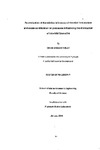An evaluation of the relative influences of elevated temperature and ocean acidification on processes influencing the distribution of intertidal barnacles
| dc.contributor.author | Findlay , Helen Sarah | |
| dc.contributor.other | Faculty of Science and Engineering | en_US |
| dc.date.accessioned | 2011-09-28T10:29:40Z | |
| dc.date.available | 2011-09-28T10:29:40Z | |
| dc.date.issued | 2010 | |
| dc.date.issued | 2010 | |
| dc.identifier | Not available | en_US |
| dc.identifier.uri | http://hdl.handle.net/10026.1/763 | |
| dc.description | Merged with duplicate record 10026.1/2395 on 13.20.2017 by CS (TIS) | |
| dc.description.abstract |
Ocean acidification and climate change are occurring as a result of anthropogenic release of carbon dioxide (C02) into the atmosphere. Changes in climate and ocean chemistry are occurring concomitantly and at a faster rate than previously recorded in Earth's history, yet little is understood about how they will influence the population dynamics and ecology of many marine organisms. The barnacle Semibalanus balanoides is a major space occupier on rocky shores in northern Europe and hence changes in its population ecology can have a broad influence on other species. An intertidal high CO2 microcosm system was developed in order to determine how temperature and CO2 interact to affect S. balanoides egg development, nauplii development and cyprid development. Changes in abundance and viability of the early life stages impacts the supply of larvae arriving in the intertidal and post settlement mortality determines the number of individuals reaching reproductive age. Laboratory experiments indicated that elevating CO2 and temperature slows the metamorphosis of cyprids thereby increasing their exposure to desiccation. Increased temperature and CO2 had greatest impact on smaller individuals prior to metamorphosis with poor survival being linked to slow growth and ability to calcify. Embryo development rates were also reduced significantly by elevated CO2, while the survival of brooding adults was lowered. These experimental data were then incorporated into a population model used to predict the changes in population abundances over the coming century. At the southern edge of its geographic range, S. balanoides is predicted to be most significantly impacted by temperature, although in colder years CO2 has a significant influence. A conceptual model developed using these empirical data suggests that at the northern edge of its geographic range, S. balanoides, appears more likely to be impacted by ocean acidification than temperature, particularly through changes in resource allocation and changes in life history. | en_US |
| dc.description.sponsorship | Plymouth Marine Laboratory | |
| dc.language.iso | en | en_US |
| dc.publisher | University of Plymouth | en_US |
| dc.title | An evaluation of the relative influences of elevated temperature and ocean acidification on processes influencing the distribution of intertidal barnacles | en_US |
| dc.type | Thesis | |
| dc.identifier.doi | http://dx.doi.org/10.24382/4983 |
Files in this item
This item appears in the following Collection(s)
-
01 Research Theses Main Collection
Research Theses Main


